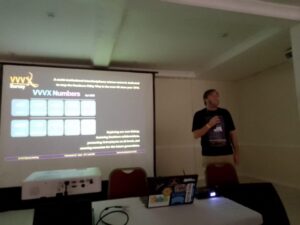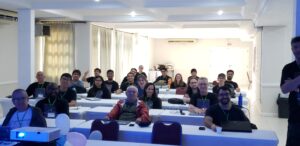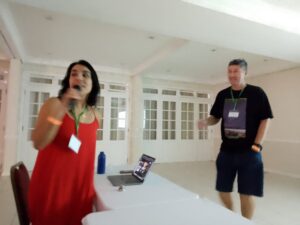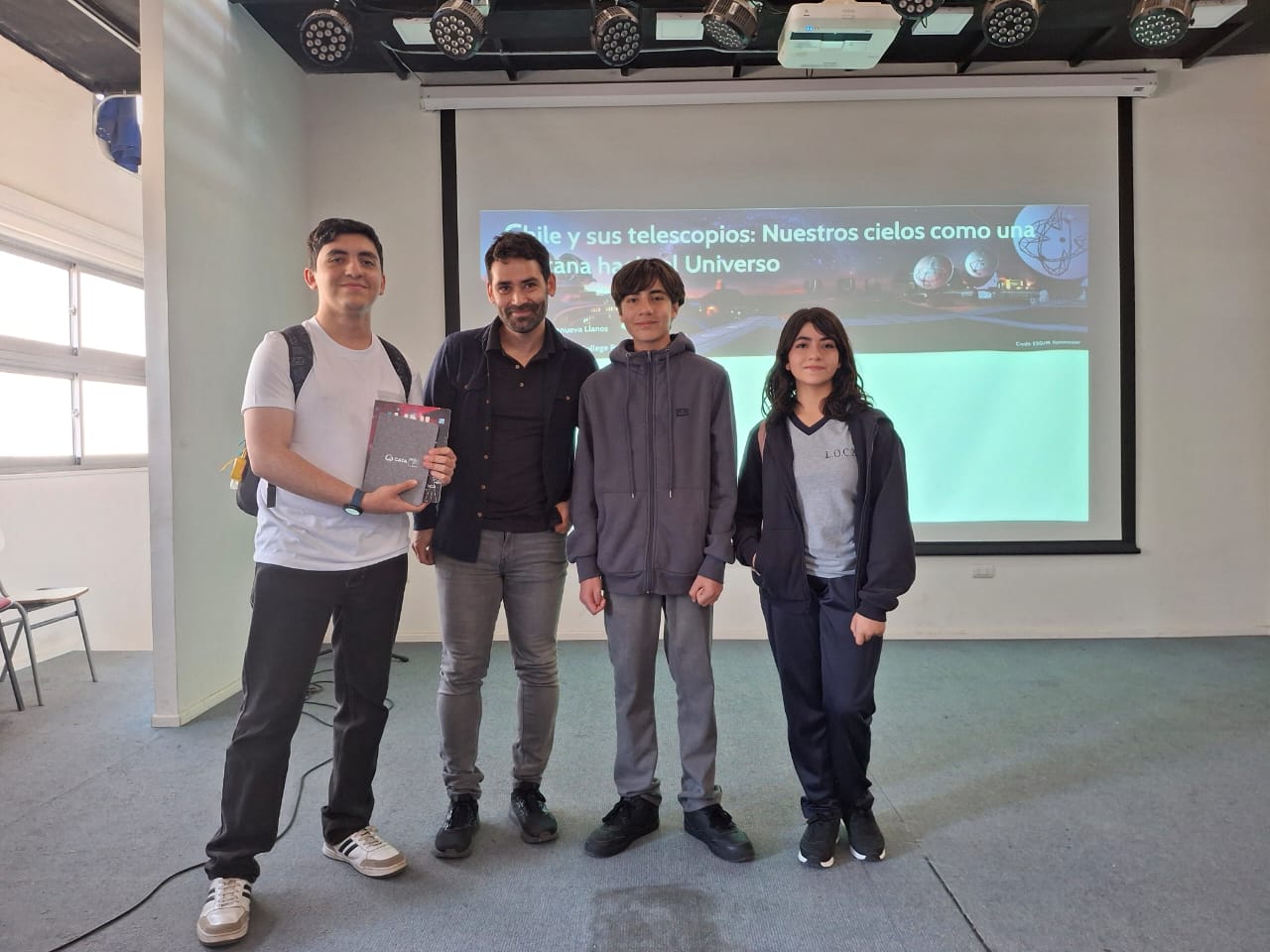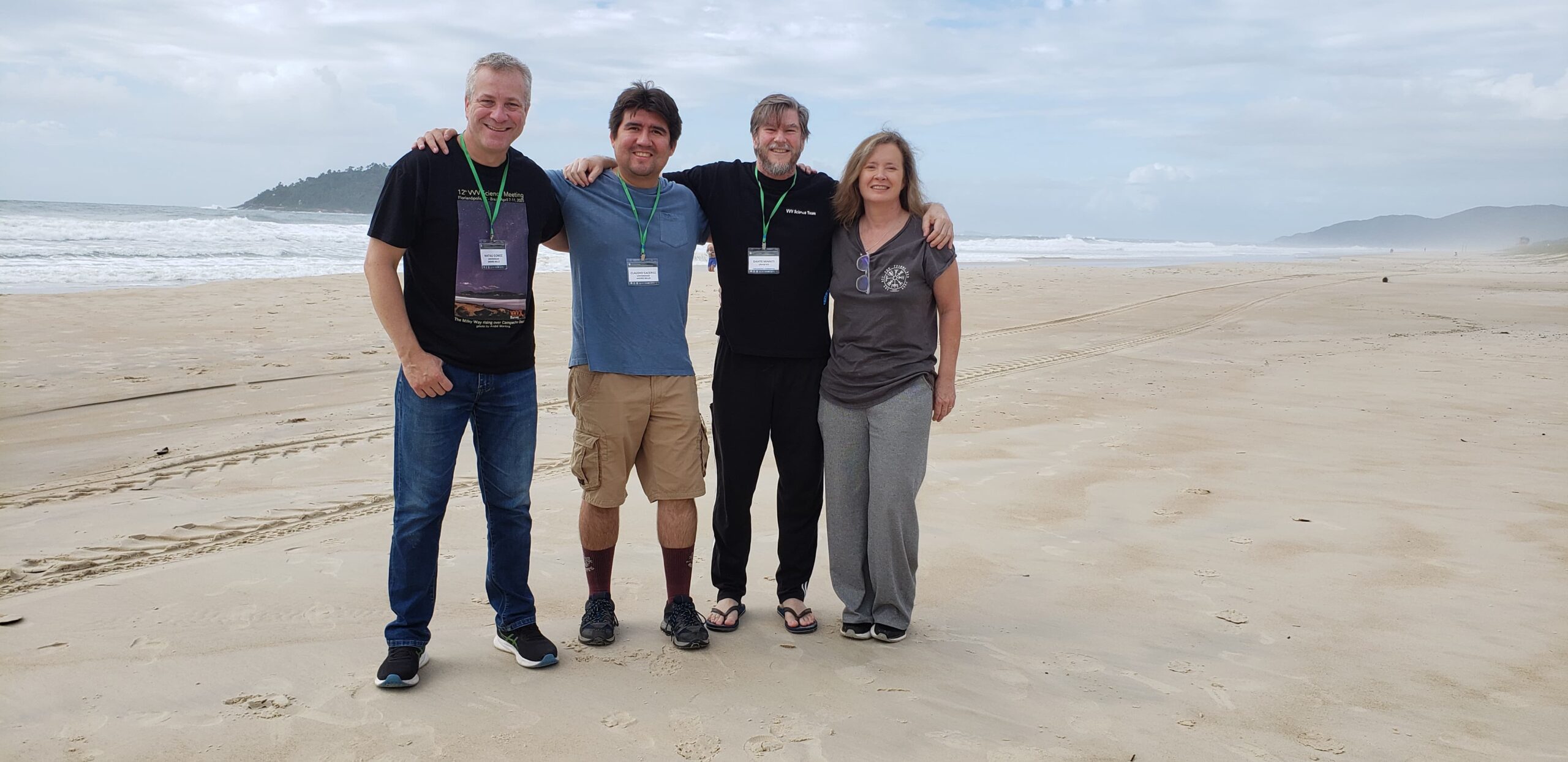
CATA researchers participated in Scientific Conference in Brazil
CATA researchers Dante Minniti and Claudio Cáceres participated in Florianópolis in the XII Scientific Conference of the VVV/VVVX Survey.
Florianópolis, Brazil, hosted the XII Scientific Conference of the VVV/VVVX Survey, which brought together experts from institutions in more than ten countries to present the most recent advances in the study of the galactic plane and center, and to project synergies with the next generations of ground-based and space-based telescopes.
The meeting, entitled “The VVV Synergy with Next Generation Milky-Way Studies”, had the outstanding participation of researchers from the Center for Astrophysics and Related Technologies (CATA), including Dante Minniti (Principal Investigator) and Claudio Cáceres (Associate Researcher) and academics from the Universidad Andrés Bello (UNAB), who presented advances in their research “The Future Galactic Plane Survey with the Roman Space Telescope” and “Isolated planetary-mass objects in young stellar associations”, respectively.
“The team has used the 4-meter VISTA telescope at Paranal in Chile to repeatedly observe the inner parts of our galaxy in the infrared for a dozen years, generating one of the largest astronomical databases. Thanks to these observations, we have been able to study regions that were traditionally hidden by interstellar gas and dust,” explained CATA researcher Dante Minniti.
At the conference, discoveries were presented, such as new catalogs of galaxies hitherto invisible because of their location behind the galactic plane, variable stars of the “dipping giants” type (with irregular brightness changes), and new RR Lyrae in old, very old globular clusters.
Both astronomers emphasized the relevance of our Center to be present at the meeting. “These discoveries and many other studies discussed at the conference organized by the Federal University of Santa Catarina (UFSC), in conjunction with CATA, open the way for a better understanding of the structure and formation of the Milky Way,” said Minniti.
“CATA was very important, as it supports us both financially, covering part of the expenses associated with participation in this meeting, as well as serving as one of the pillars for the development of the science that was presented,” said Claudio Cáceres, Associate Researcher at CATA. “Part of that support is also reflected in the support to students within the research area called Exoplanets and Astrobiology.”
Regarding the impact of these meetings, both researchers agreed that instances such as this one allow strengthening international networks, sharing results under development and coordinating future observational campaigns.
“One of the next steps will be to combine these deep infrared observations with data from telescopes such as the Rubin, James Webb and Nancy Roman telescopes, and to complement them with spectroscopy from other instruments in Chile,” said Minniti. “I emphasize the collaborative nature of these meetings. The format favors interaction among researchers, student participation, the creation of collaborative networks and open scientific discussion,” said Cáceres.
CATA’s participation in this type of meetings consolidates its role as a reference in astrophysics at national and international level, promoting a high-level collaborative science with global projection.
Recent news
-
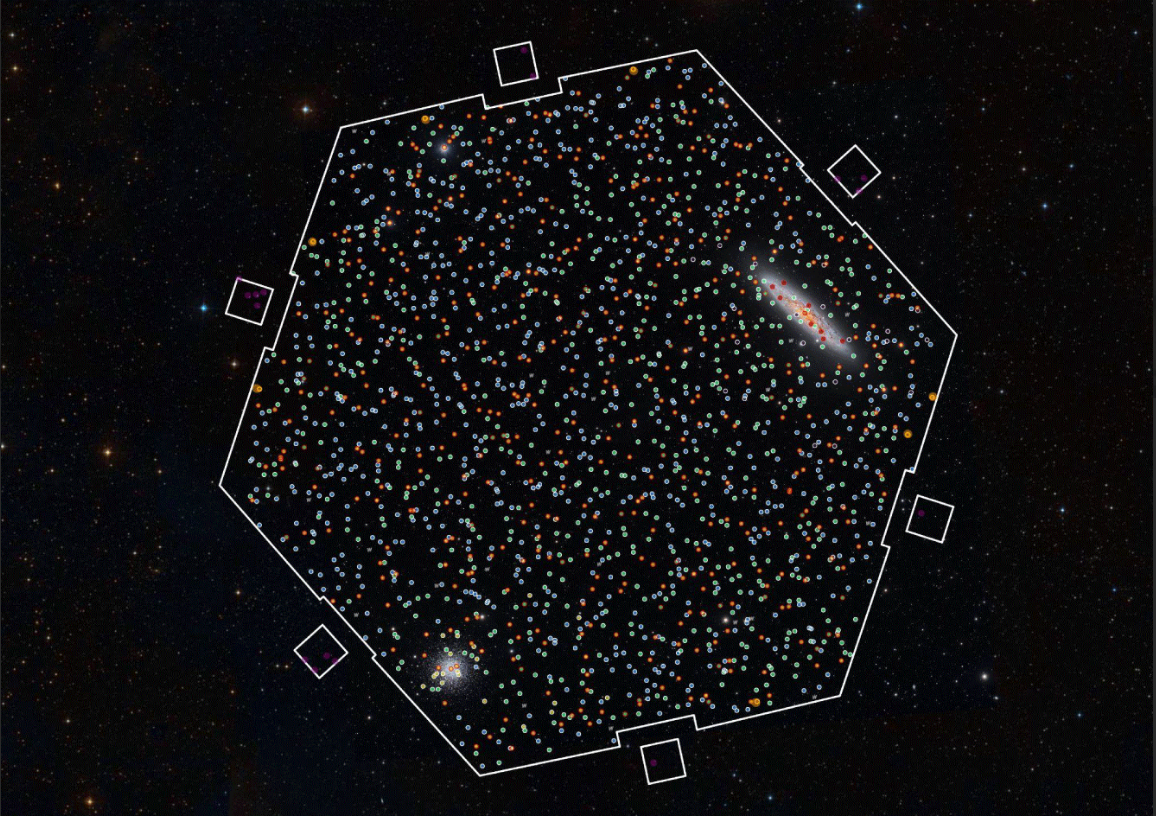 Publicado el: 29/10/2025Chile celebrates the first light of 4MOST: two major projects involving CATA astronomers begin to explore the Universe
Publicado el: 29/10/2025Chile celebrates the first light of 4MOST: two major projects involving CATA astronomers begin to explore the Universe -
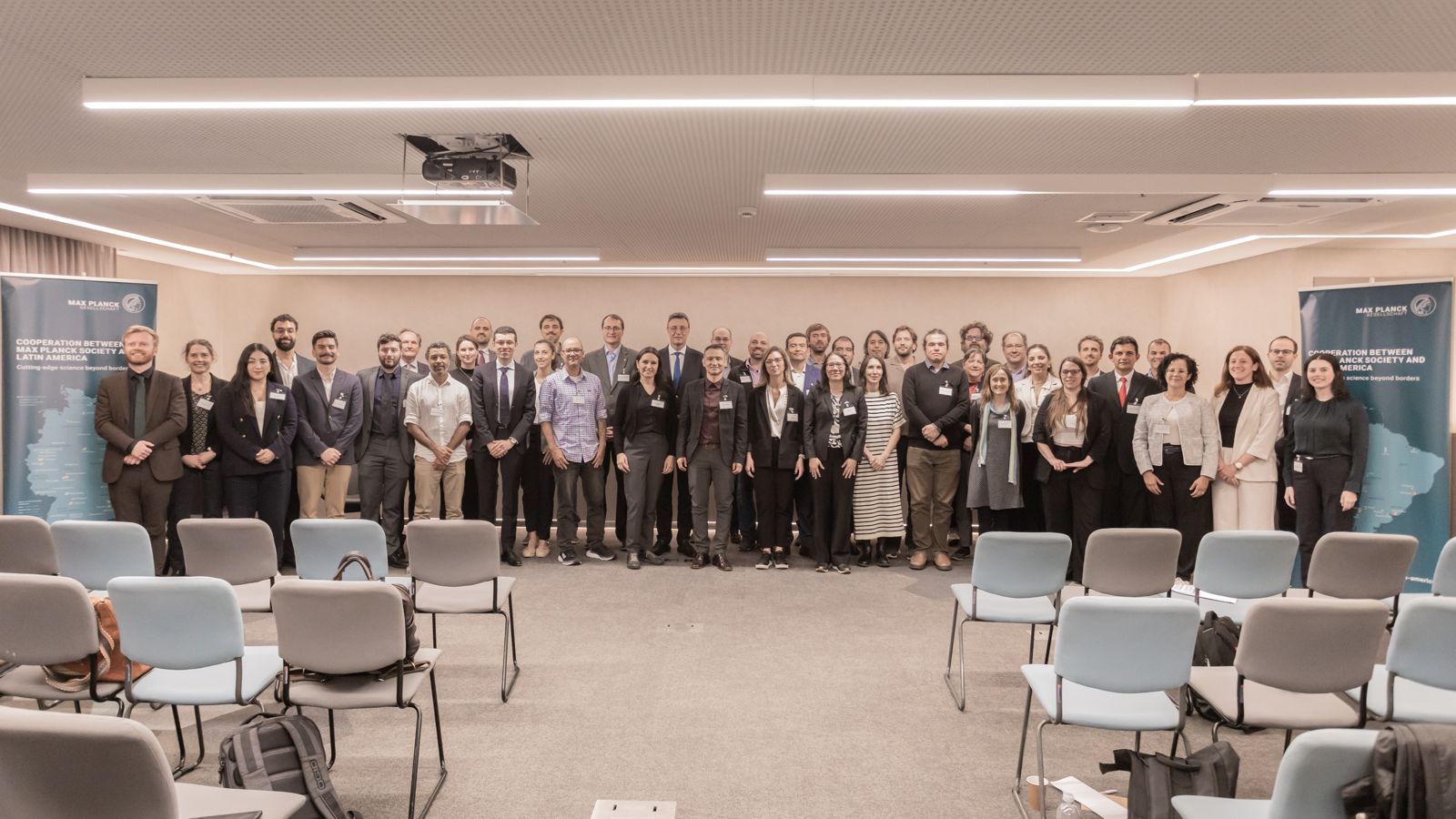 Publicado el: 24/10/2025CATA researcher participated in Max Planck regional meeting in Brazil
Publicado el: 24/10/2025CATA researcher participated in Max Planck regional meeting in Brazil -
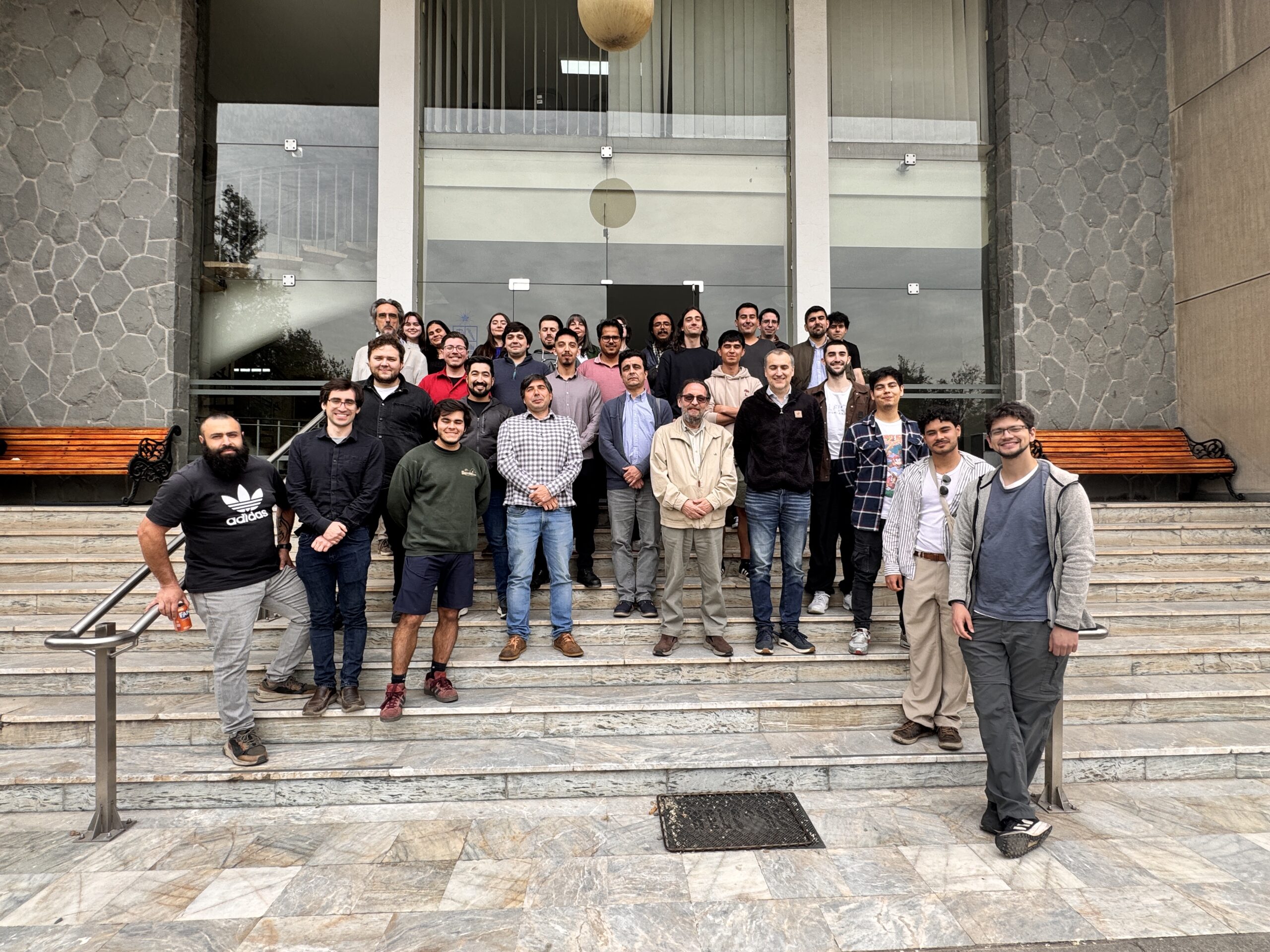 Publicado el: 24/10/2025CATA strengthens its Astronomical Instrumentation area with a view to the next five years
Publicado el: 24/10/2025CATA strengthens its Astronomical Instrumentation area with a view to the next five years -
 Publicado el: 23/10/2025CATA Associate Researcher leads innovative project for millimeter wave receivers
Publicado el: 23/10/2025CATA Associate Researcher leads innovative project for millimeter wave receivers -
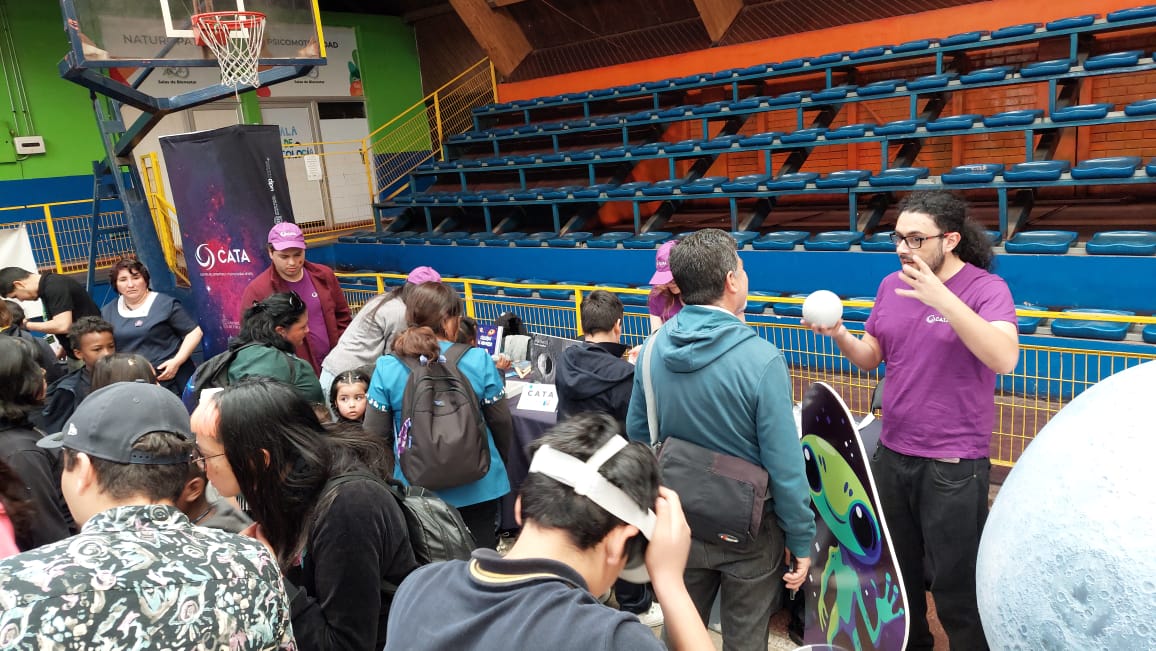 Publicado el: 10/10/2025Families and students from Cerro Navia learned about astronomy at the Science Fair
Publicado el: 10/10/2025Families and students from Cerro Navia learned about astronomy at the Science Fair
Categories list
- Acknowledgments 21
- Astrobiology 5
- AstroCluster 1
- Black holes 18
- Corporativo 57
- Cosmology 5
- Descubrimientos 22
- Disclosure 70
- Exoplanets 13
- Extension 4
- Galaxies 21
- Galaxies formation 5
- Inter y Transdisciplina 3
- Local Universe 15
- Publications 6
- Sin categorizar 34
- Solar System 18
- Stellar formation 8
- Technology 14
- Technology Transfer 16

